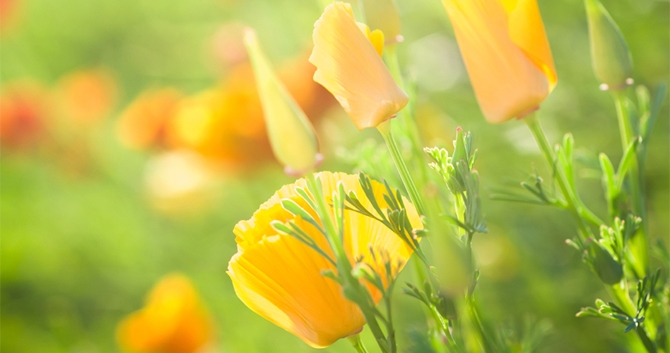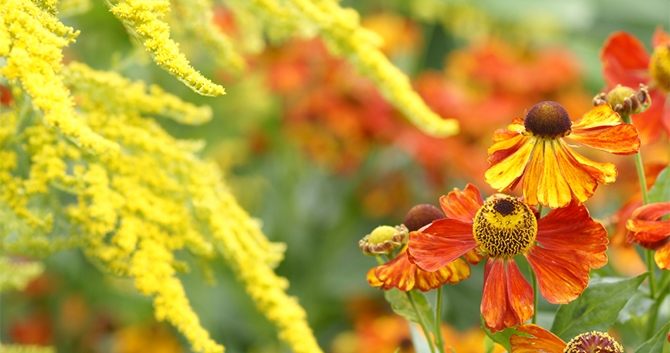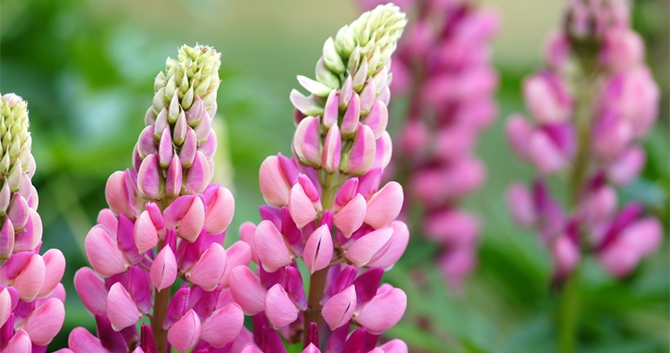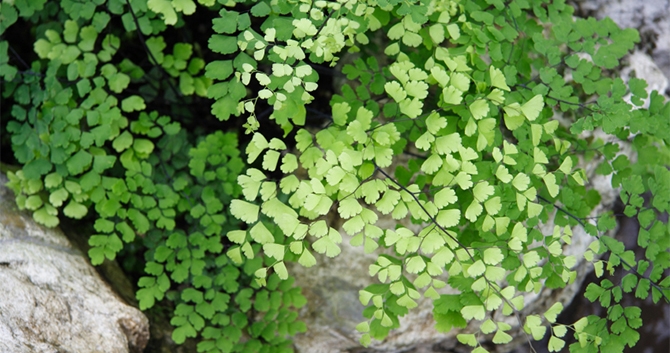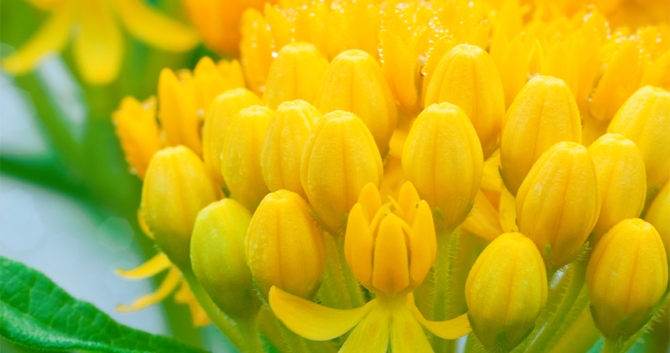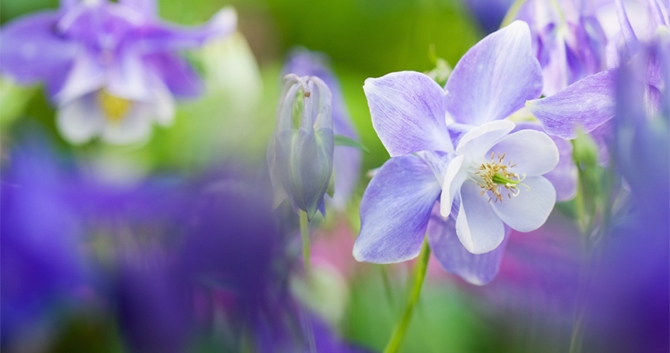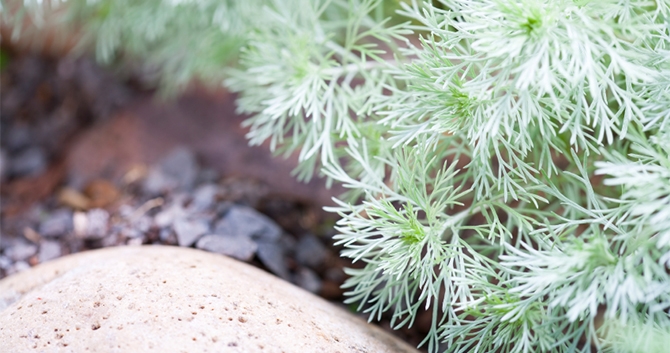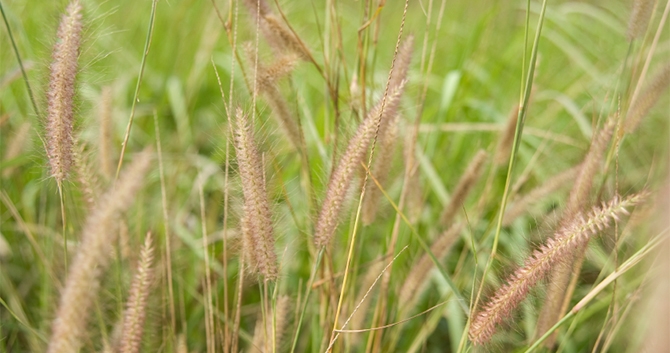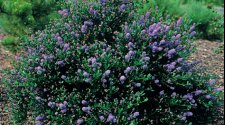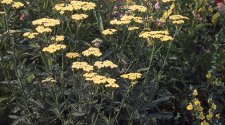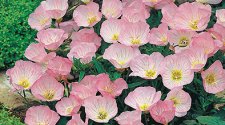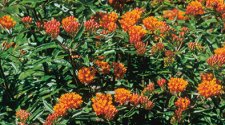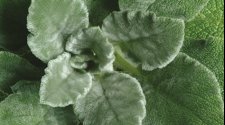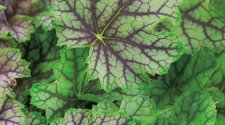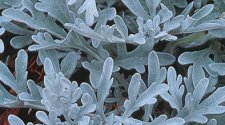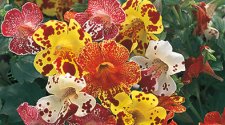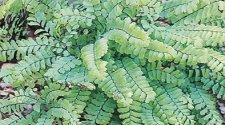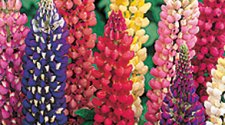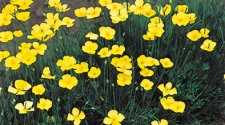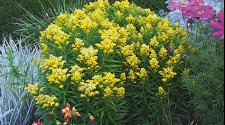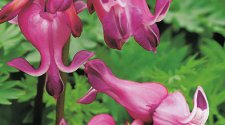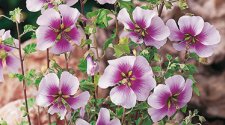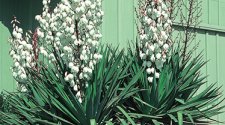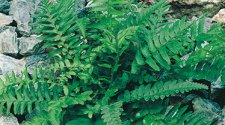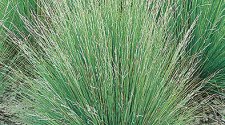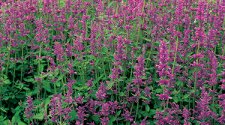When you think of California what comes to mind? Sunny, relaxing days? Warm breezes? The laid-back lifestyle? Or effortless beauty? Believe it or not you can have all that in your own backyard with California native plants – no matter where you live! These plants are ready and willing to relocate.
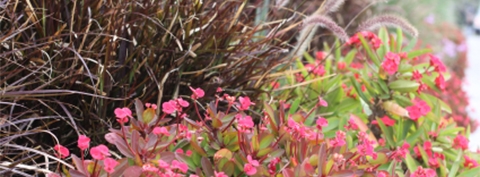 West Coast style is all about drama (in a good way)
West Coast style is all about drama (in a good way)
Creating a beautiful space is easier than you think, whether you’re dreaming of colorful garden beds and fragrant borders, seaside dunes with swaying grasses, or a hip secluded retreat. Many of our favorite flowers, ferns, grasses, and shrubs have been tended lovingly in California - with the wide variety to choose from, all you need is your imagination!
Although there’s lots of California native plants to choose from, there are some true celebrities worth including in your plans for this year. The top choices remind us of the blues of the Pacific Ocean, the yellows and oranges of a citrus grove, and the subtle beauty and textures of the desert.
Carefree Plants for Sunny Spots
If you’re like us, you love the look of containers, window boxes, and hanging baskets but hate the drudgery of having to water daily or run the risk of drooping plants. And who wouldn’t prefer to sit in a deck chair rather than wrestle with a hose to water the lawn or garden bed?
That’s why we love these drought tolerant, heat resistant, sun worshipers from the West Coast. Whether you’re planting in a small space or tackling a larger area, there’s a California native plant to do the trick. They ask so little and give so much in return, effortlessly adding color, fragrance, and interest to any garden spot. Mix and match our favorites below - just by changing a plant, color, or texture you can create a whole new mood.
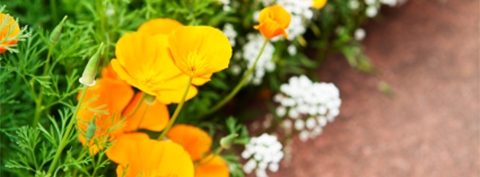 Bright orange poppies are irresistible in a sunny garden border
Bright orange poppies are irresistible in a sunny garden border
California Poppy:
The official state flower of California in sunny shades of yellow and orange pairs perfectly with white alyssum and chartreuse potato vine for a cheerful planter.
Mexican Evening Primrose (Oenthera):
Delicate, almost translucent petals sway in the garden by day and continue to shine after the sun sets. In rock gardens and borders, this plant is a must have, especially where it can be backlit at night to create a filtered glow through the petals.
Butterfly Weed (Asclepias):
Adorned with spectacular red, orange, and yellow flowers you’ll get twice the color from all the visiting butterflies.
Lupines:
Wild lupines cover the landscape along the coast of California in waves of blue and white mirroring the shades of the ocean. Their tall flowering spires make them a great backdrop to any garden and are spectacular when casually planted in front of stone walls and fences.
Monkey Flower (Mimulus):
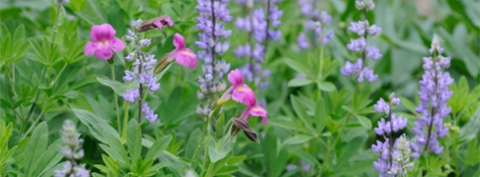 Monkey flowers float on green foliage along with spires of lupines
Monkey flowers float on green foliage along with spires of lupines
Monkey Flower is prized for its vivid colors and whimsical blooms resembling a monkey’s face. Use it in containers and hanging baskets to add an instant pop to porches and patios.
Don’t forget the fragrance! It appeals to our senses and adds another layer of enjoyment to our gardens – not just for us but for the birds, butterflies, and bees. With these California natives, hummingbirds, Monarch butterflies, and honey bees will not be strangers to your garden.
Hummingbird Mint (Agastche):
Flowering spires of tightly clustered smoky red-violet flowers can’t help but turn heads. Brush against this plant for a refreshing scent of licorice-mint. Great when planted with milkweed (another butterfly favorite), yarrow, sages, and grasses.
Goldenrod (Soliago):
It you’re looking for an easy way to add little splashes of yellow color all season long, then “Little Lemon” Goldenrod is a sure winner. Plant in containers or borders where you can brush the leaves and enjoy a hint of anise. Combine with ornamental grasses, lambs ears, or butterfly weed for a subtle mix of color and texture.
California Lilac (Ceanothus):
California Lilac is truly a show stopper with beautiful dark blue blossoms that can create almost any mood. Try using these lilacs in a formal garden as a hedge or informally as a standalone planting. Birds love to nest in the dense growth while bees and butterflies visit for the nectar. Variety “Dark Star” and “Yankee Point” are worth a look.
Lemonade Berry (Rhus Intergriflia):
Lemonade Berry is a native California evergreen shrub that graces canyons, bluffs, and dry slopes from Baja to Santa Barbara. Its small fragrant flowers bloom in tight clusters of pink and white in May, followed by down-covered fruit that adds soft contrast to other garden plants. The flavorful berries can be used to make a lemon-like drink, but try this with caution as other members of this genus are highly toxic.
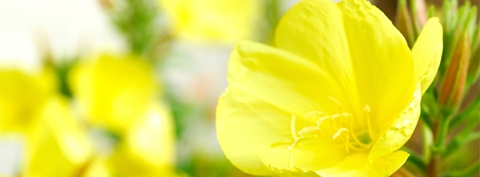 Bright yellow primrose reminds us of California lemon groves
Bright yellow primrose reminds us of California lemon groves
Tree Mallow (Lavatera):
Tree Mallow is absolutely irresistible to hummingbirds and butterflies! It’s ideal in the background, layering blushing pinks and lavenders behind white iris or lemony roses. Try “Blushing Bride”, a beautiful white variety with a red eye.
Cleveland Sage (Salvia Clevelandii):
Cleveland Sage is a fragrant evergreen shrub with ashy green leaves and jewel tone amethyst blooms rising on 12 inch spikes. Varieties like intensely violet-blue “Winifred Gilman” or red and white “Saucy Red” are great for borders, mixed with shrubs or containers. Bees, butterflies and hummingbirds won’t be able to thank you enough!
The gold rush may have brought a wave of prospectors to California, but it’s the silver foliage of these native plants that gardeners are flocking to. While most of us turn to colorful flowers to perk up a patio, deck, or yard, these foliage plants are a designers secret weapon for adding fullness and keeping containers, window boxes, and garden borders lush and full all season long.
Lambs Ears (Stachys):
Lambs Ears spreads quickly in sunny locations to create silver carpet or calm border of velvety soft foliage. They’re also especially nice in containers, filling void spaces and quietly complementing colorful flowers. Their sweet name and soft leaves are inviting to young children and a great way to introduce them to gardening.
Silver Mound (Artemisia):
These cushions of soft, feathery silver-grey foliage are a consistent favorite in rock gardens and containers.
Yarrow (Achillea):
Silver gray foliage and canary yellow flowers keep the color going all summer long. Outstanding in containers when paired with ornamental grasses.
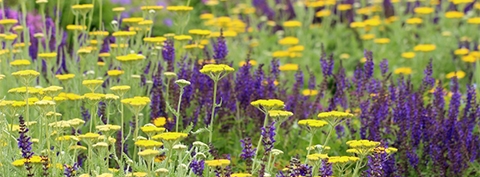 Golden yarrow in drifts effortlessly to create a West Coast natural look
Golden yarrow in drifts effortlessly to create a West Coast natural look
Californians struggle with drought but are as enthralled with green lawns as the rest of us. Why not take a page out of their garden journal and try replacing your thirsty lawn with low-maintenance ground covers. They’re also great for those trouble spots where the grass refuses to grow. Kick off your shoes and treat your bare feet to a summer stroll.
Blue-Eyed Grass (Sisyrinchium bellum):
Resembling miniature irises with bluish-purple flowers on grass-like leaves, this California native thrives in coastal communities, bluffs, meadows, and sloping grasslands. It is evergreen and resilient, tolerating high foot traffic effortlessly.
Western Bleeding Heart (Dicentra Formosa):
Even the gentlest of breezes causes the delicate, heart-shaped flowers to sway on fine stems. This versatile plant is equally at home in moist woods and dry meadows, modestly spreading to form a pink blanket when the flowers are blooming. Enjoys the company of Columbine and ferns.
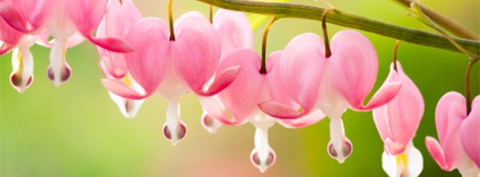 Plant bleeding heart under trees where the grass won't grow
Plant bleeding heart under trees where the grass won't grow
Woodland Retreat:
California natives also make great go-to plants for shady spots offering respite from the hot sun or a long day. Creating a cool retreat to unwind is easy with graceful ferns and interesting accent plants. As the summer heats up they turn up the color.
Coral Bells “Pinot Gris” (Heuchera):
First appearing in light shades of ginger and silver, this plant turns up the heat with smoky rose leaves accented with silver and a contrasting purple underside. It finishes with tiny white flower spires on slender stems. Foliage, texture and color make it perfect for walkways, paths, and containers. Pairs well with good friends and a glass of Pinot - Cheers!
Columbine (Aquilegia):
A wonderful addition to any garden, their graceful, nodding flowers float above wispy foliage. While their many colors are stunning, the exquisite shapes of the flowers and sweet subtle fragrance rival for the attention. A great mid-height plant in informal woodland gardens when paired with ferns and hostas.
Ferns:
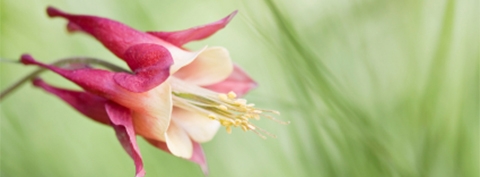 Columbine adds whimsy to a garden and blends well with hosta and moss
Columbine adds whimsy to a garden and blends well with hosta and moss
Several California native ferns layered with moss and hosta instantly create a soothing mood. Try Rosy Maidenhair Fern, which first emerges in a striking amber color, then matures into a soothing green. Western Sword Fern is also a great choice.
One of the most abundant ferns on the Pacific Coast, its tall leathery leaves provide seclusion and privacy.
Add subtle color and subdued texture with Barnes Male Fern. Its slightly ruffled edges and deep green frond color complement the airy foliage of other woodland plants.
California Coastal Chic:
Nothing evokes California like an ocean vista landscaped with grasses blowing in the breeze. Native California grasses come in all sizes, ranging from 1 to 5 feet or more. The work wonderfully with the poppies, lupines, and sedges in containers, mixed borders, or naturalized meadows. Most grasses, once established are drought tolerant or require little water. Their seeds also provide food for many birds.
Purple Needlegrass:
Purple Needlegrass is the official grass of California. It is a tough, but beautiful grass that reaches 1 – 3 feet tall with seed heads of purple.
California Fescue:
California Fescue is perfect for a sloping landscape and is equally happy in bright sun or light shade. Its 3 ½ foot stalks sway in the breeze above shorter foliage. It pairs perfectly with Phlox and succulents.
Deergrass:
This grass is reminiscent of tall prairie grass. 3 feet tall with stalks capable of reaching 5 feet.
Yucca “Whippeli”:
Visit Southern California in June and you’ll see towering yucca stalks of creamy-white “flames” dotting the mountainsides. These add drama to a deck or patio when planted in large containers.
Getting Started
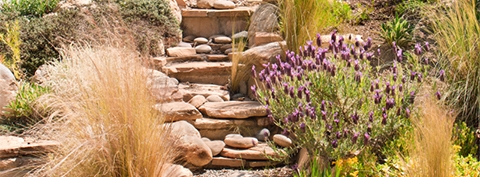 Mix grasses with flower plants for a garden that combines color and movement
Mix grasses with flower plants for a garden that combines color and movement
Life is hectic enough; our gardens should be our refuge! Let your garden reflect your style. New gardeners will be inspired by growing native plants - the success rate is built right in. Long time gardeners - your secret is out! But, no matter where you fall in the gardener time line, remember - Easy, carefree, effortless beauty is what it is all about! Try these California collections or put together your own combinations that fit your lifestyle.
Woodland Retreat:
Layers and textures are the key – mix azaleas or hydrangea in the background for early spring color. Soften the look with Columbine, Bleeding Heart, or California ferns in silver grey or rosy cinnamon. Add structure with hosta or trillium. Mix in ground covers like of moss for beautiful color.
Coastal Garden Chic:
Start with California Lilac and Cleveland Sage then mix in ornamental grasses and Silver Mound Artemisia. The grasses will catch the slightest breeze, while the Silver Mound will naturalize the border. White lupines and “Little Lemon” Goldenrod add bursts of color throughout the garden.
West Coast Garden Natural:
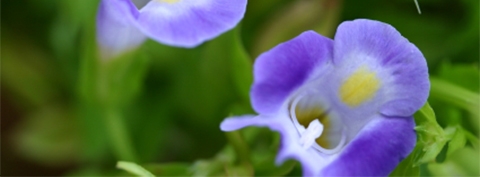 Monkey flower has a cheerful face that resembles snap dragons
Monkey flower has a cheerful face that resembles snap dragons
Reminiscent of natural meadows this carefree collection conserves water for effortless enjoyment. Start with Goldenrod, Yarrow, and ornamental grasses to lend a natural look. Sprinkle in California Poppies to punctuate the garden with yellows and orange. Add Butterfly Weed will lure the butterflies and hummingbirds.

